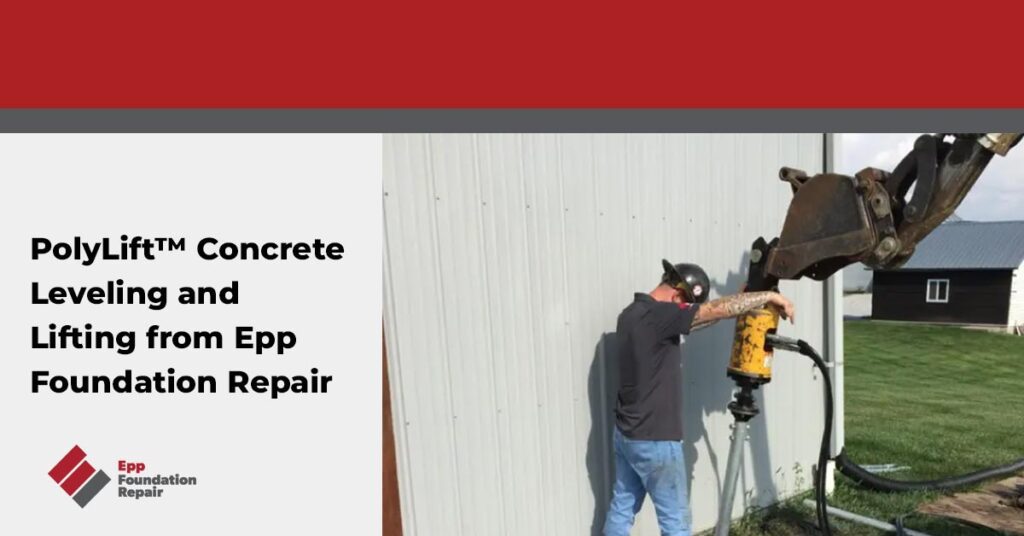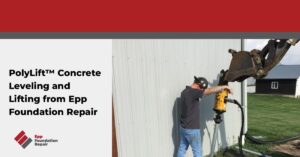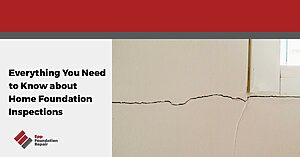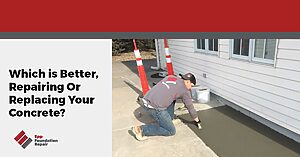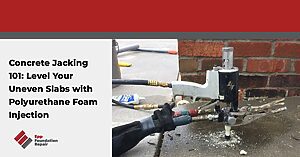If you’re looking for information about concrete leveling, you’ve landed on the right page. This short article will cover why slabs become unlevel, the basics of concrete leveling using polyurethane foam injection, how you can prevent a slab from sinking, the difference between poly foam and mudjacking, and more.
Uneven concrete slabs are a safety hazard
You know that phrase, “Step on a crack, and you’ll break your mother’s back”? Well, it’s not just a children’s superstition. It becomes a real problem when you miscalculate your steps and twist your ankle on uneven concrete.
What is concrete lifting?
PolyLift injections lift sunken concrete by injecting a rapidly-expanding foam material underneath the slab. A reaction occurs within the foam that causes it to expand and harden within minutes, thus lifting the slab and filling any voids. The foam material is 100% waterproof, will never break down, and perfectly fills voids beneath the concrete to completely support the slab. PolyLift injection (also called “polyjacking”) lasts significantly longer than traditional mudjacking (more on this below), and the result looks better as well.
Level concrete surfaces will keep your family safe, improve the look of your property, and may even increase the resale value of your home. For more information, see Why Choose PolyLift™ Concrete Leveling?
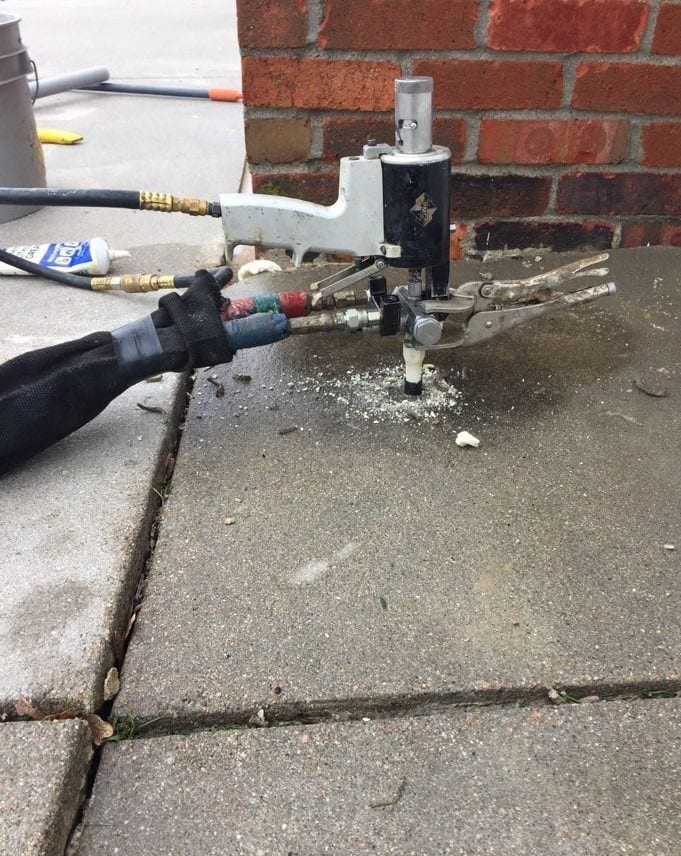
Why do concrete slabs become unlevel?
Concrete slabs can settle and become uneven from poor soil conditions, poor compaction, tree roots, and poor drainage. We’ll talk more about this in just a bit.
Uneven concrete is visually unattractive and could potentially lead to injury or liability claims for commercial properties. Areas that most commonly experience concrete sinking include:
- Driveways
- Sidewalks
- Patios
- Walkways
- Steps
- Stoops/porches
- Garage floors
- Pool decks
- Basement slabs
How much does concrete lifting cost?
The cost of concrete lifting will depend on various factors, including how much the slab has settled (this determines how much poly foam we need to use) and your geographical location.
What is concrete leveling? Is that something different from concrete lifting?
There’s no difference between concrete lifting and concrete leveling. They’re different terms for the same thing. During the PolyLift procedure, the uneven concrete slab is lifted and leveled. This eliminates dangerous trip hazards.
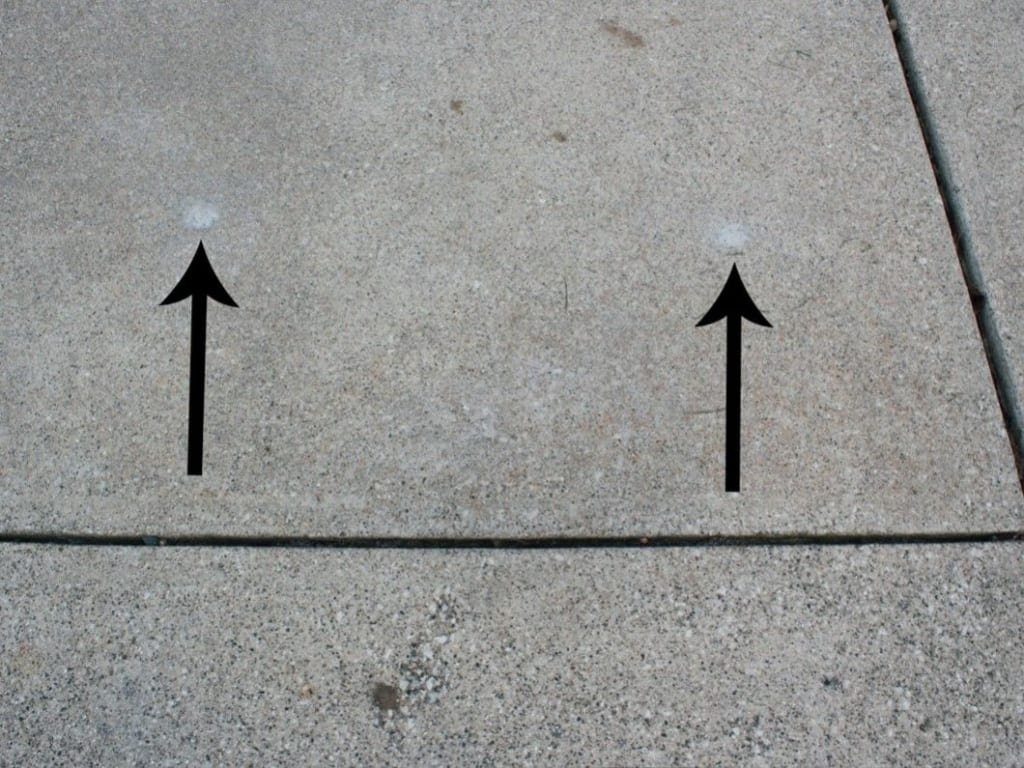
What is mudjacking?
Mudjacking is an “old school” method of lifting and leveling an uneven concrete slab. It involves injecting a mixture of water, soil, and other materials under sunken concrete to fill voids and lift the slab. The process involves drilling several holes in the concrete and then using them to inject the cement slurry under the slab. The holes are then filled with concrete to mask the repair, which takes at least 24 hours to set.
Concrete leveling: Polyjacking vs. mudjacking
Lifting and leveling a concrete slab via mudjacking is less expensive than poly foam. However, it has fallen out of widespread use because the cement slurry is heavy and puts an additional burden on the soil. Sometimes, the slab starts sinking again, and that means another repair. This is far less likely to happen with poly foam which is extremely lightweight.
Today, almost all concrete lifting and leveling is done using poly foam. For more information see Concrete Lifting Foam Beats Mudjacking Hands Down For Fixing Uneven Slabs.
How to prevent a concrete slab from becoming unlevel
Here are a few ways to prevent a concrete driveway, sidewalk, patio, or any other type of slab from becoming uneven:
- Soil needs to be compacted before the contractor pours a new slab – If soil isn’t adequately compacted before concrete is poured, the heavy slab will gradually sink into the soil and, over time, become uneven.
- Make sure the soil can hold up a concrete slab – Sometimes, the soil isn’t strong enough to support something heavy, like a big piece of concrete. If it isn’t, the slab could become uneven eventually and require lifting and leveling.
- Keep trees with large root systems away from the slab – Tree roots can grow, invade the soil under the slab, and exert pressure on the slab. If this happens, the slab will become uneven. We’ve all seen examples of this.
- Ensure good drainage in the soil under the slab – Poor drainage under the slab can cause erosion if the soil type is prone to erosion. This can create voids under the slab, and when the slab sinks into them, it becomes uneven.
Read more about – Concrete Driveway Leveling
If there’s expansive clay soil under the slab, excess moisture will cause the soil to swell and push up against the slab. When this type of soil dries out, it shrinks, and the slab drops back down. This movement probably won’t be noticeable. However, over time it will cause an unlevel slab.
The solution is to make sure there’s good drainage around the slab. For more information, see The Importance of Proper Foundation Drainage Around Your Home.
If you have an uneven concrete driveway, sidewalk, or some other type of slab, contact us today for a free inspection and repair estimate.

